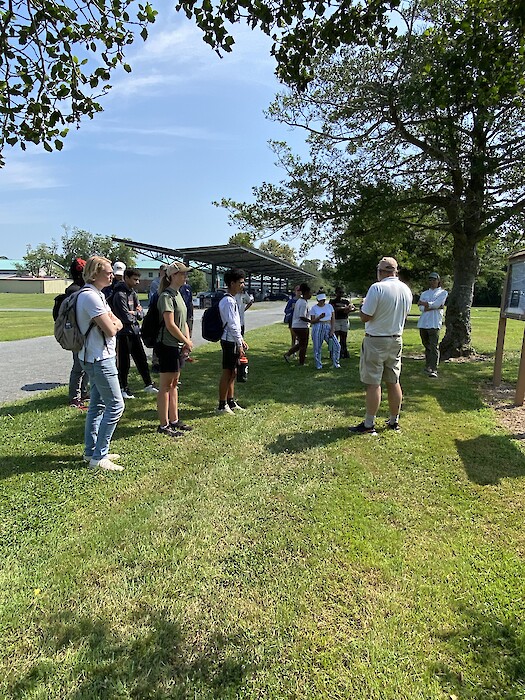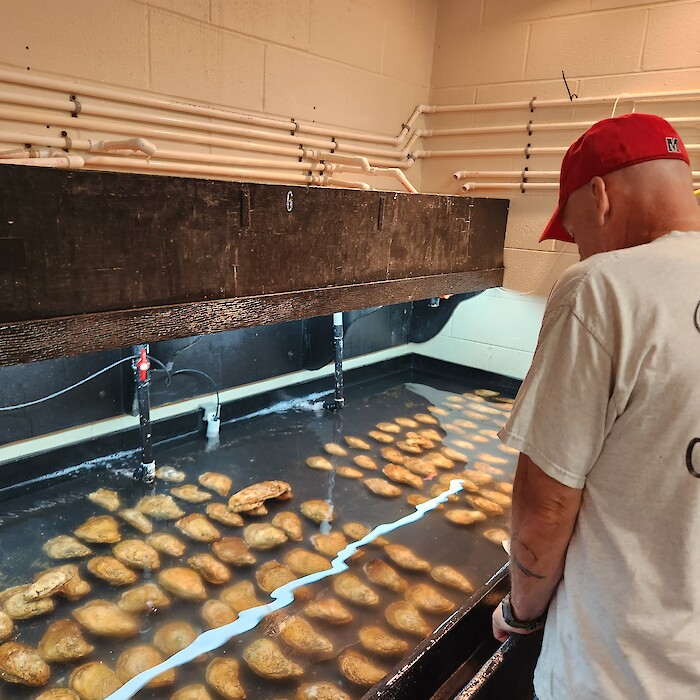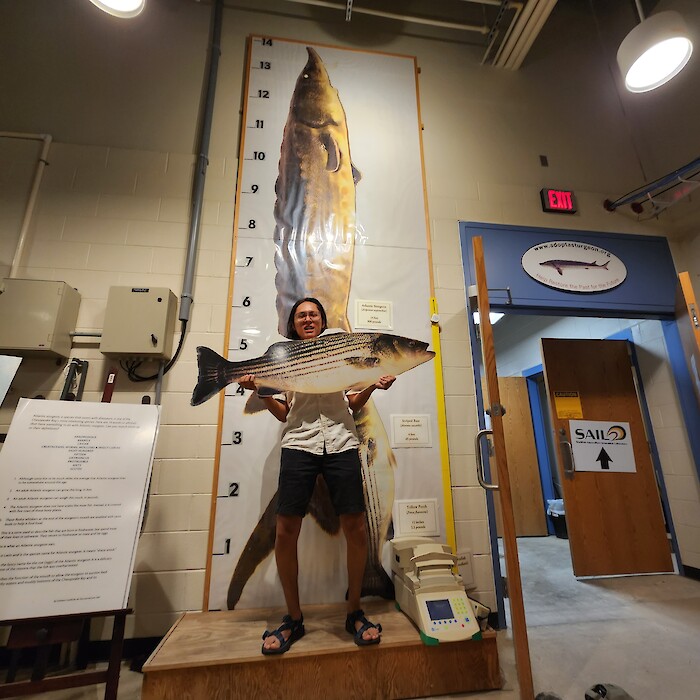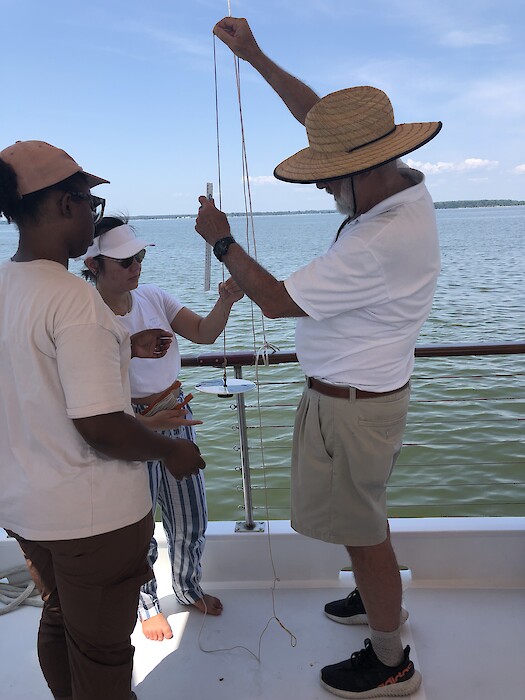A Day Trip to Horn Point Lab
Kameryn Overton ·Horn Point Lab has such a beautiful space! Located in Cambridge Maryland on 800 acres right off the Choptank River, arriving here after leaving the busy city of Annapolis felt very calming. Aside from the buildings that made up the lab, we were surrounded by nothing but land, and only the buzzing of insects could be heard. With the Choptank River in the background, it was almost perfectly picturesque. Although I had been enjoying my stay in Annapolis, I was for just a moment jealous of the interns who got to live here.
After gathering together with other interns we were then off on our tour of the lab. As we walked along, we got to hear about some of the history of this lab. What struck me the most was the role that the lab played in determining the decline of seagrass in the Chesapeake Bay in the 1970s. As we were told, scientists had theorized that only two things could have caused it: nutrients or pesticides. The lab was able to conduct testing using ponds to see what was the cause. They filled these ponds with water from the Choptank to simulate real conditions and then planted the seagrass and let it settle. After that, they tested the various ponds with differing levels of nutrients to see how the grasses would respond and it was found that excess nutrients were to blame. These findings were influential and encouraged further monitoring of excess nutrients in all of the Chesapeake Bay! Learning about the rich history of the lab gives me a deeper understanding of the passion that everyone there has for their work on the Bay.

A group of students stands in front of Dr. Bill Dennison outside as he shares with them about the history of the research ponds at the lab.
As we were led around the large space to be given a tour of the facilities I couldn’t help but just be amazed. I got to see huge oyster shell hills, the different stages of oyster growth, advanced oyster feeding systems, and learn about Atlantic sturgeon! We got to meet and speak with many workers in the lab and hear about what their roles were. Some monitored the feeding systems, others got to handle the oysters, and others managed the large tubs they were placed in to grow.

A man leans over a large tub filled with water and oysters. There are many oysters in the tub lined up in rows and columns.
Of all the places we toured, my favorite was the room that was all about Atlantic sturgeon. We learned that Atlantic Sturgeon are large fish that used to be more abundant in the Chesapeake Bay, but due to many factors, their numbers have declined. They also can grow to very large sizes but are not found to be as big as they used to be. The best part was the huge poster they had in the room to show us how long the sturgeon can get!

A young man is holding a cardboard cut out of a fish while standing in front of a poster showing the maximum growth length of the Atlantic sturgeon. The young man is drastically shorter than the poster behind him.
The last part of our trip to the lab was a trip on a boat out on the Choptank. All the interns and mentors gathered aboard and we set off, intending to do some testing while out on the water. On our way to the testing location, all the interns had time to talk with each other. I enjoyed hearing about what other students were doing at the other labs and how they felt about their work. As we arrived at the testing location one of the mentors Dr. Judy O’Neil allowed students to participate in the collection of data regarding the water quality.

Coming back from the boat trip I was honestly really tired but I was content with my day! I got to meet other students doing research, see some incredible work being done at the lab as well as see some amazing equipment and technology, see a ton of oysters and oyster shells, and also got to take a boat trip. Seeing the efforts that labs like this within the University of Maryland system put forth makes me more and more determined to see what the world has for me after graduation. Although that probably wasn’t the main focus of my internship, I’m glad this field trip gave me some insight that I didn’t know I needed.
About the author
Kameryn Overton

Kameryn Overton is a rising senior environmental science major with a minor in biology at Tuskegee University. She has interests in environmental justice, environmental health, and sustainability.